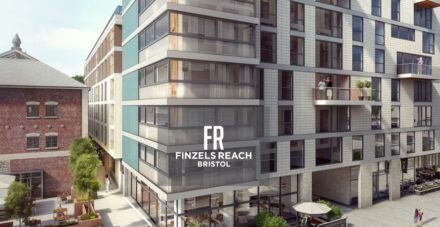
January 24, 2019
As Bristol grapples with a housing crisis, the big question is where the next swathe of homes will come from? With demand rocketing and supply tight, everyone’s eyes are on which new build schemes are in the pipeline, and there’s a new kid on the block in terms of housing models: build-to-rent. Known in the US as multi-family, and not to be confused with PRS, the private rented sector, build-to-rent has made its way over to the UK from across the Atlantic and having been embraced in London, it’s now emerging in Bristol.
There’s been a cultural shift in the UK: people want flexibility, they value life experiences and want to be in the heart of our urban hubs. But more importantly, while the affordability of owning your own home is undoubtedly an issue, people are making the choice to rent rather than buy, it’s a lifestyle choice that is already deeply embedded in European culture but is increasingly popular here too. But people want quality and they often want to be part of a community, so individually rented private apartments aren’t always the answer.
At Finzels Reach in Bristol, we are developing a 194-apartment build-to-rent scheme for Grainger, whilst we’ve plans to deliver over 300 build-to-rent homes over the road at the former Avon Fire and Rescue headquarters site, which forms the next phase of Finzels Reach. We aren’t the only ones to be doing this and there are around 1,000 more coming through the pipeline that we know of, but we are certainly one of the first.
But what’s different about build-to-rent? These are high quality homes designed specifically for the rental market, they’re professionally managed with a 24/7 point of contact and have shared, communal spaces and an emphasis on building a community. Essentially a resident rents the building rather than an apartment. The communal spaces might include comfy sofa and desks with high speed WiFi so residents can work from home, rooftop spaces for yoga, or even rooms for hire if they have guests to entertain. In a world in which we are faced with a loneliness epidemic, one of the most important aspects of the model is that the shared spaces encourage people to get to know each other, helping to pave the way for the creation of a proper community.
A typical resident might be someone after the flexibility associated with renting as opposed to buying, but also looking for the security that comes with longer term tenancies. Someone who wants to make the most of life in a thriving city centre like Bristol, but wants a high quality, comfortable environment to call their home. It could be an older person looking to downsize or a young professional couple, or even a family in the right scheme.
From a business point of view, build-to-rent is really what it says on the tin. It’s built for a professional landlord to retain, let and manage themselves, rather than being built to sell on. It’s institutionally funded and offers significant growth prospects for those investors over the longer term, whilst for developers, improved cash flow means homes can be delivered quicker than more traditional developments, whilst it sits well within a wider mixed-use scheme.
So what next for build-to-rent? We’re definitely going to see more build-to-rent in Bristol, and indeed in other regional cities such as Cardiff and Exeter over the coming years. Whilst it certainly won’t solve the housing crisis, as a mix of tenures and types of housing is needed, it will help meet some of the demand. In many cities the challenge will be land availability, but in Cardiff, for example, the student market is close to saturation point, opening up opportunities for build-to-rent instead. Looking further ahead, we’ll probably start seeing the model applied to houses as well as apartments, again reflecting what’s happening already in the US, so watch this space!
First published by Cubex Land in January 2019.
For more information on Cubex Land, please click here.